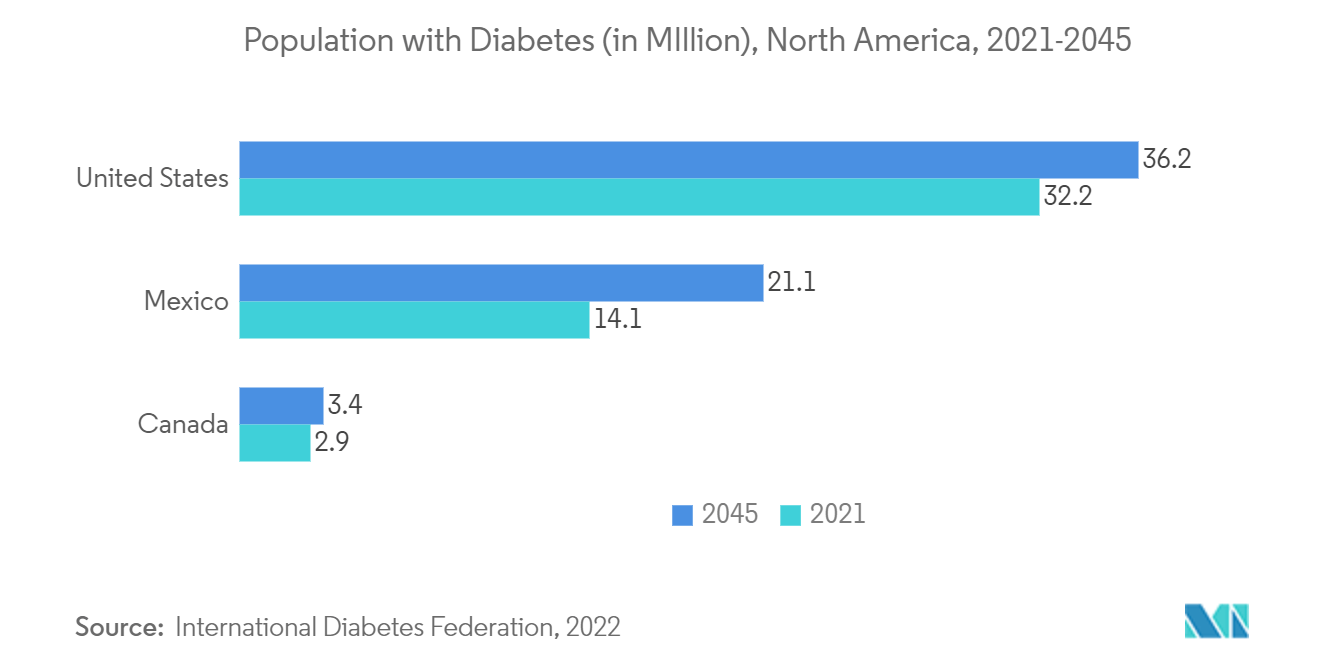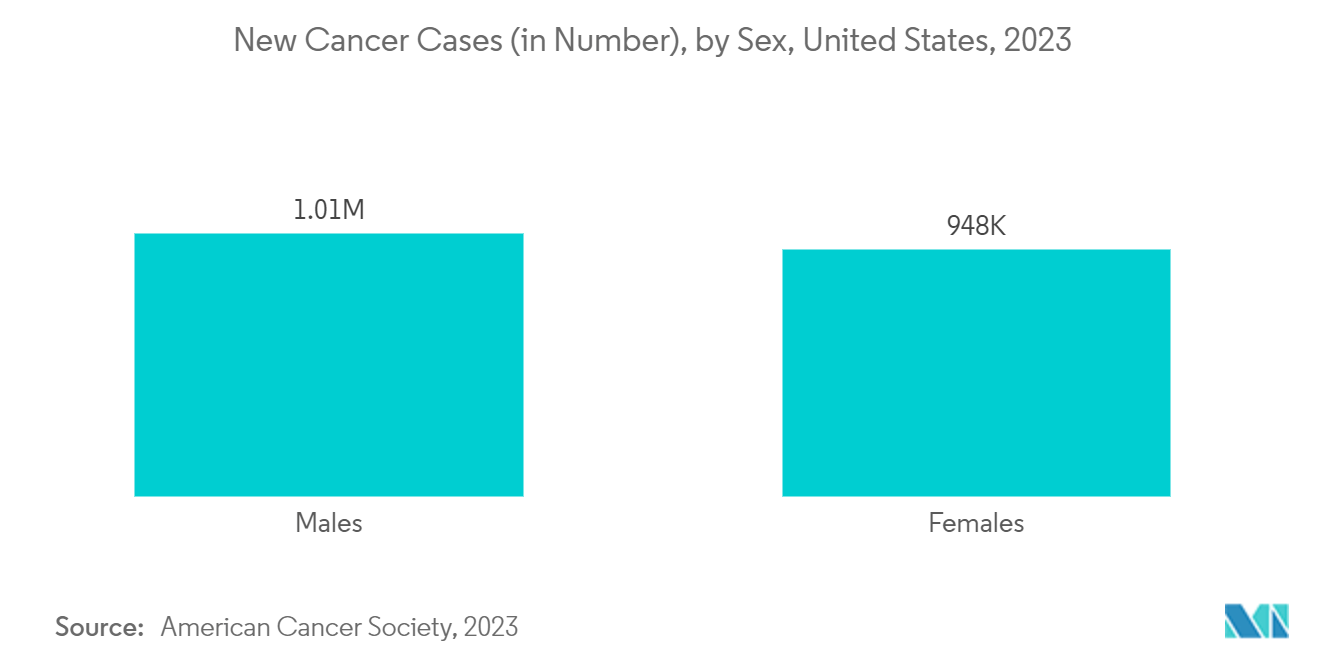Market Trends of North America Advanced Drug Delivery Systems Industry
The Inhalation/Pulmonary Drug Delivery System Segment is Expected to Witness Significant Growth Over the Forecast Period
The pulmonary drug delivery system is an advanced pharmaceutical technology that utilizes the lungs as the primary route of administration to efficiently deliver therapeutic agents to the body, offering improved bioavailability, targeted treatment, and enhanced patient convenience. Factors such as the increased burden of pulmonary disorders such as asthma and chronic obstructive pulmonary disease (COPD), coupled with several advantages associated with the pulmonary drug delivery system compared to conventional treatments, are projected to accelerate segmental expansion over the forecast period.
The alarming burden of respiratory disorders is likely to fuel the demand for novel drug delivery systems, boosting segmental expansion over the forecast period. For instance, according to July 2024 updated data of the Asthma and Allergy Foundation of America, over 27 million people had asthma in the United States, equivalent to around 1 in 12 people.
As per the same source, around 22 million adults aged above 18 had asthma. Thus, such a significant burden of respiratory conditions in the region is anticipated to propel the uptake of respiratory therapeutics, which is expected to boost segmental growth over the forecast period.
The higher utilization of inhalation-based drug delivery systems in respiratory conditions is further expected to fuel segmental growth. For instance, according to an article published by Health Science Reports in April 2024, lung ailments like chronic obstructive lung disease and cystic fibrosis were treated with the adoption of devices like pressurized metered‐dose inhalers, metered‐dose inhalers amid their higher pressure and greater drug deposition at target site capabilities. Thus, such benefits offered by pulmonary delivery system products are anticipated to foster segment expansion over the forecast period.
The segment’s growth is expected to be driven by the increasing volume of organic and inorganic developments undertaken by market players to introduce technologically advanced pulmonary inhalation systems in the region. For instance, in August 2023, Lupin Pharmaceuticals Inc. launched Tiotropium Bromide Inhalation Powder for the management of chronic obstructive pulmonary disease (COPD) in the United States. Thus, such new product launches are likely to propel the uptake of pulmonary drug delivery systems, which is expected to boost market growth over the forecast period.
Thus, the above-mentioned factors, including the increasing burden of pulmonary disorders such as asthma and chronic obstructive pulmonary disease (COPD) and several advantages associated with the pulmonary drug delivery system compared to conventional treatments, are expected to accelerate segmental growth over the coming years.

The United States is Expected to Hold a Significant Market Share Over the Forecast Period
The United States is expected to hold a significant share of the market over the forecast period owing to factors such as the better adoption of improved drug delivery solutions and follow-up of advanced treatment approaches in healthcare. In addition, the growing inclination toward self-administration of drugs, increasing innovations in injectable drug delivery systems, the high adoption rate of new healthcare technologies, and the high prevalence of chronic diseases are also expected to boost market growth over the forecast period.
The growing burden of target diseases such as cancer, neurological diseases, cardiovascular diseases, and others is expected to increase the demand for effective and advanced drug delivery systems. For instance, according to the American Cancer Society, the estimated number of new cancer cases increased from 1.9 million in 2023 to 2.0 million in 2024. The most common type of cancers diagnosed in 2023 were breast, lung, and hematological malignancies.
According to the updated data from the Centers for Disease Control and Prevention (CDC) in May 2024, chronic kidney disease (CKD) was a significant burden in the United States, and around 35.5 million people, or 14% of the population, had CKD in the country. Thus, the increasing disease burden in the country is expected to spur the demand for nanocarriers and microparticle-based drug delivery systems for improved therapeutic outcomes.
The improved role of carrier-based systems in cancer drug delivery is further expected to foster the development of a carrier-based drug delivery system, boosting market growth over the forecast period. For instance, according to an article published by the International Journal of Molecular Sciences in April 2023, liposome-based drug delivery is ideal for treating several advanced-stage cancers like breast cancer and prostate cancer. The liposome carrier system showed improved stability and biodistribution of therapeutic agents to accelerate treatment outcomes and reduce cellular toxicity.
Such benefits from carrier-based delivery systems in cancer therapeutics are likely to foster their adoption in drug formulations, which is expected to boost the market’s growth over the forecast period.
Technological advancements and growing introductions of technologically advanced injector systems are other factors projected to accelerate the country’s market growth. For instance, in February 2024, Coherus BioSciences Inc. launched the UDENYCA on-body injector (OBI) with the LTS Sorrel wearable technology system in the United States. The newly launched product improved performance and patient convenience in wearable injection devices. Such novel technology introductions are likely to boost the market’s growth over the forecast period.
Therefore, owing to the aforementioned factors, such as the high burden of cancer and kidney disease and growing company activities, the market is anticipated to grow over the forecast period.


